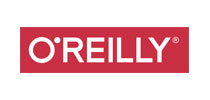001. Chapter 1. Introducing F
002. Chapter 1. Introducing F
003. Chapter 1. Why F
004. Chapter 1. When F
005. Chapter 1. How will this book teach me F
006. Chapter 1. How does F work
007. Chapter 1. Summary
008. Chapter 2. Hands on with F
009. Chapter 2. F and .NET
010. Chapter 2. Installing F
011. Chapter 2. Getting Started with Visual Studio Code
012. Chapter 2. REPL and scripts
013. Chapter 2. Development flows
014. Chapter 2. Where scripts and the REPL fit in
015. Chapter 2. Summary
016. Chapter 3. F Syntax Basics
017. Chapter 3. Type inference
018. Chapter 3. Exercise answers
019. Chapter 3. Summary
020. Chapter 4. F Fundamentals
021. Chapter 4. Immutable data
022. Chapter 4. Exercise Answers
023. Chapter 4. Summary
024. Chapter 5. Shaping data
025. Chapter 5. Tuples
026. Chapter 5. Records
027. Chapter 5. Anonymous records
028. Chapter 5. Tuples or records
029. Chapter 5. Exercise answers
030. Chapter 5. Summary
031. Chapter 6. Functions and modules
032. Chapter 6. Organizing code
033. Chapter 6. Answers to exercises
034. Chapter 6. Summary
035. Chapter 7. Working with collections
036. Chapter 7. 7.2 Functional collection pipelines
037. Chapter 7. Other collection types
038. Chapter 7. Aggregations
039. Chapter 7. Answers to exercises
040. Chapter 7. Summary
041. Chapter 8. Patterns and unions
042. Chapter 8. More advanced pattern matching
043. Chapter 8. Discriminated unions
044. Chapter 8. The F type system
045. Chapter 8. Summary
046. Chapter 9. Building rich domains
047. Chapter 9. Handling errors
048. Chapter 9. Computation expressions
049. Chapter 9. Domain modeling A worked example
050. Chapter 9. Summary
051. Chapter 10. Working effectively with data
052. Chapter 10. Serialization of data
053. Chapter 10. Type providers
054. Chapter 10. Data visualization
055. Chapter 10. Working with other data sources
056. Chapter 10. Tooling options
057. Chapter 10. Summary
058. Chapter 11. F Interop
059. Chapter 11. Exposing F to C
060. Chapter 11. Consuming NuGet packages
061. Chapter 11. The Fable project F and JavaScript
062. Chapter 11. Summary
063. Chapter 12. Asynchronous programming
064. Chapter 12. Asynchronous support in F
065. Chapter 12. Final thoughts on asynchronous workloads
066. Chapter 12. Summary
067. Chapter 13. Web programming
068. Chapter 13. Server-side web development in F
069. Chapter 13. Functional patterns in a web application
070. Chapter 13. Creating HTML views
071. Chapter 13. Full-stack F apps with SAFE Stack
072. Chapter 13. Summary
073. Chapter 14. Testing F code
074. Chapter 14. Basic unit testing in F
075. Chapter 14. Making testable code
076. Chapter 14. Working with NUnit-style test frameworks
077. Chapter 14. Other forms of testing
078. Chapter 14. Summary
079. Chapter 15. Pure functional programming
080. Chapter 15. Composing functions
081. Chapter 15. Working with low-level dependencies
082. Chapter 15. Working with effects
083. Chapter 15. Summary
084. Chapter 16. Where next
085. Chapter 16. How do I introduce F to my team
086. Chapter 16. The F community
087. Chapter 16. Advanced F language features
088. Chapter 16. Summary

